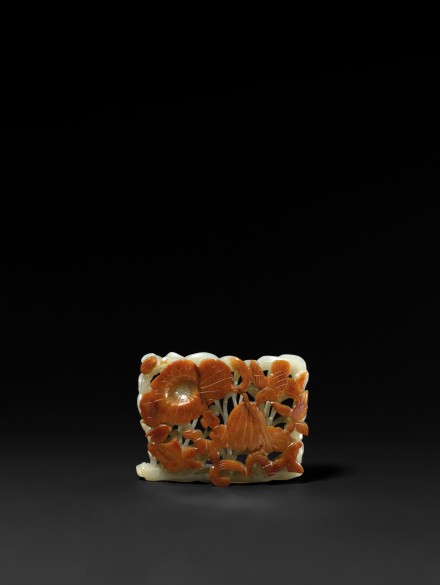J.J. Lally & Co., Oriental Art / New York City, New York
MenuPast Exhibition
Chinese Art: The Szekeres Collection
March 13-29, 2019

24.
AN OPENWORK JADE ‘DUCKS AND LOTUS’ PLAQUE
Jin Dynasty (1115 – 1234)
of reddish-brown color on the flat front and pale grayish-green tone behind, boldly carved on the front with pair of mandarin ducks in a pond scene, one bird shown at the upper right corner flying back to its mate at the lower left, with large lily pads, lotus and other aquatic plants filling the scene, all carved in outline with finely incised linear details, the reverse with long-stemmed waterweeds carved from the grayish-green part of the stone.
Width 3 1⁄2 inches (8.9 cm)
In Chinese tradition a pair of mandarin ducks in a lotus pond symbolizes a happy marriage. Mandarin ducks are believed to mate for life and therefore serve as a symbol of fidelity and a good marriage, often reinforced by the imagery of lotus (he / 荷), a punning reference to harmony (he / 和).
A similar openwork jade plaque decorated in the same style with layers of grapes and leafy grapevine highlighted with incised linear details in the collection of the Shanghai Museum is illustrated by Zhang, Shanghai bowuguan cangpin yanjiu daxi: Zhongguo gudai yuqi (Research series of the Shanghai Museum Collection: Ancient Chinese Jades), Shanghai, 2009, p. 209, no. 171, described as Jin dynasty.
金 鴛鴦戲荷紋透雕玉飾 寬 8.9 厘米
24.
AN OPENWORK JADE ‘DUCKS AND LOTUS’ PLAQUE
Jin Dynasty (1115 – 1234)
Width 3 1⁄2 inches (8.9 cm)